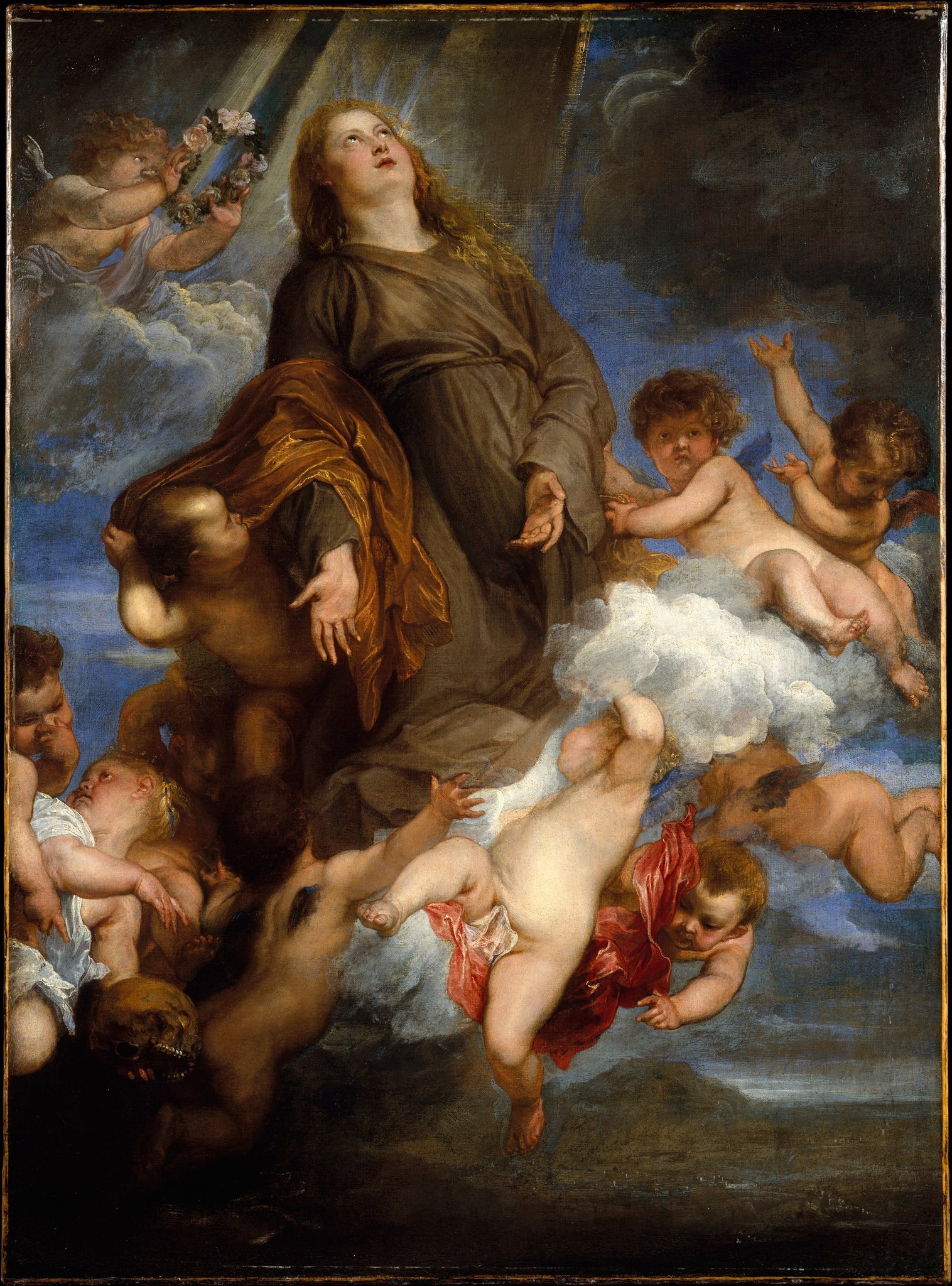
We all have our exasperating moments. You hear the door slam, only to realize you have forgotten your keys; you arrive at the hardware store moments after it closes; or another meeting request arrives in your inbox. In these moments, you might grit your teeth and turn your gaze to the sky, seeking solace in the heavens. It is a pose invoked by Saint Rosalie, the patron saint of the Sicilian city of Palermo, who was sent to save the civilians from bubonic plague during the 14th century. The image painted by Flemish master Anthony van Dyck: Saint Rosalie Interceding for the Plague-stricken of Palermo (1624), has become a meme, clowning on the many moments that might make a savior throw her hands up.
Early iterations of the Saint Rosalie “bruh” meme date to 2017. A wide ranging audience has reveled in Van Dyck’s touch, from hobby car mechanics to public school systems, who helped the meme gain steam early on across Facebook, BuzzFeed, and even LinkedIn. Her visage has maintained a presence in the online collective consciousness ever since, with recent iterations abound across Reddit and X. Online retailers even offer tote bags emblazoned with Rosalie’s face.
Van Dyck painted this scene in a state of crisis. While in Palermo to paint the Spanish viceroy, a bad bout of plague besieged the city, trapping the artist within it. Legend has it that Saint Rosalie, a noblewoman who’d once been deemed the city’s patron saint, appeared to a local woman in a vision to share the location of her remains. A crew went to dig, and miraculously found Rosalie’s bones in the spot that the prophecy had foretold. Palermitans paraded Rosalie’s skull through the street, worshipping the saint and hoping she would deliver refuge from the disease. Van Dyck made five paintings during the surreal sojourn—the meme-ed version is among the first European paintings that the Metropolitan Museum of Art acquired.
The Saint Rosalie “bruh” meme appears in a variety of captions and text styles, but most focus solely on her face. In Van Dyck’s full-sized work of oil on canvas, she ascends heaven’s golden beams, above Palermo’s recognizable landscape. Putti throng her, one placing a flower crown around her head. Given the painting’s title, the angels symbolize humanity’s innocence as much as simply infant victims of illness. Saint Rosalie seems to be entreating god to have mercy, with her hands and that upward gaze, which seems at odds with the image’s use as a symbol of exasperation. Though perhaps its modern-day usage is more in line with the true emotions of the artist. After all, this was a man incensed by his own Italian lockdown.
What’s in a meme? Sometimes, art. Art Behind the Meme brings you the low-down on the artworks that have achieved our era’s finest and rarest feat: virality. Read on for how these art-historical works have been reimagined for the age of social media.